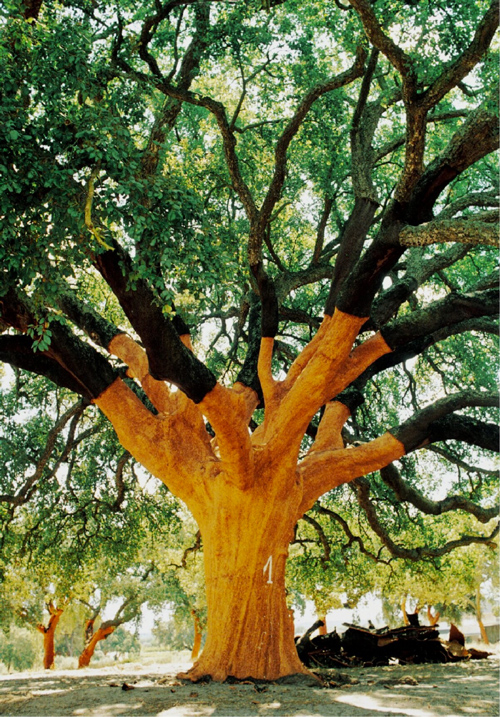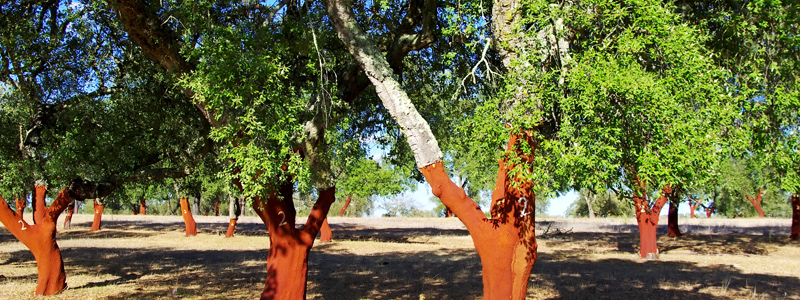We recently covered the (long) history of wine storage and transportation. As we discussed in that article, the glass bottles we’re so accustomed to today are only about 400 years old, despite the fact we’ve been drinking wine for 8,000 years. No glass bottle is complete without a stopper — to keep the wine inside and to keep oxygen and airborne bacteria out. After some brief experiments with other materials, cork emerged as the stopper of choice. It’s held that position for centuries, though recent innovations like screw-caps are threatening its long dominance.
So what is cork and where does it come from? A finished cork is made from the bark of a particular species of oak tree, Quercus Suber. You could say this species of oak tree is cousins with the types of oak trees that are used for barrel aging wine. Quercus Suber grows in a limited climate zone, and for various reasons (civil war in Spain and economic instability in Algeria) Portugal has come to dominate the modern production of cork. The country is home to about half the world’s commercial cork-producing oak trees, spread out over more than 1.6 million acres of forest.
In a 1.6 million acre forest of cork trees there’s bound to be some variation among the trees, but there’s one tree that really stands out, and its name is The Whistler Tree. To put The Whistler Tree in perspective, let’s take a look at a typical cork tree:
- A cork tree is typically harvested for the first time when it turns 25 years old.
- It can subsequently be harvested every 9 to 12 years (9 is the minimum under current Portuguese law).
- A cork tree’s average life expectancy is about 200 years.
- When a typical cork tree is harvested it will yield around 100 pounds of bark, enough corks for about 4,000 bottles. This number can vary quite a bit over a tree’s long life.
So How About The Whistler Tree?
The 1991 harvest is the most famous, and the largest on record:
- 2,645.55 pounds of bark were pulled from the tree.
- That record haul of bark yielded well over 100,000 individual corks.
Some quick math will tell you that this harvest alone was responsible for more corks than some trees produce in their entire 200-year lives. The Whistler Tree’s harvest was a bit more modest in 2000, but seeing as the tree’s been harvested regularly since 1820, it’s estimated that by the time its bark is removed for the last time it will have yielded the raw material that went into more than 1 million corks.

If you’re wondering how bark turns into the typical cork with which you’re familiar we suggest you check out these two great resources:
- Watch this video to see how you harvest a cork tree (hint – axes are involved).
- To learn how the harvested bark is turned into an actual cork check out The Wine Anorak’s great guide (with photos!).
Header image via Shutterstock.com

